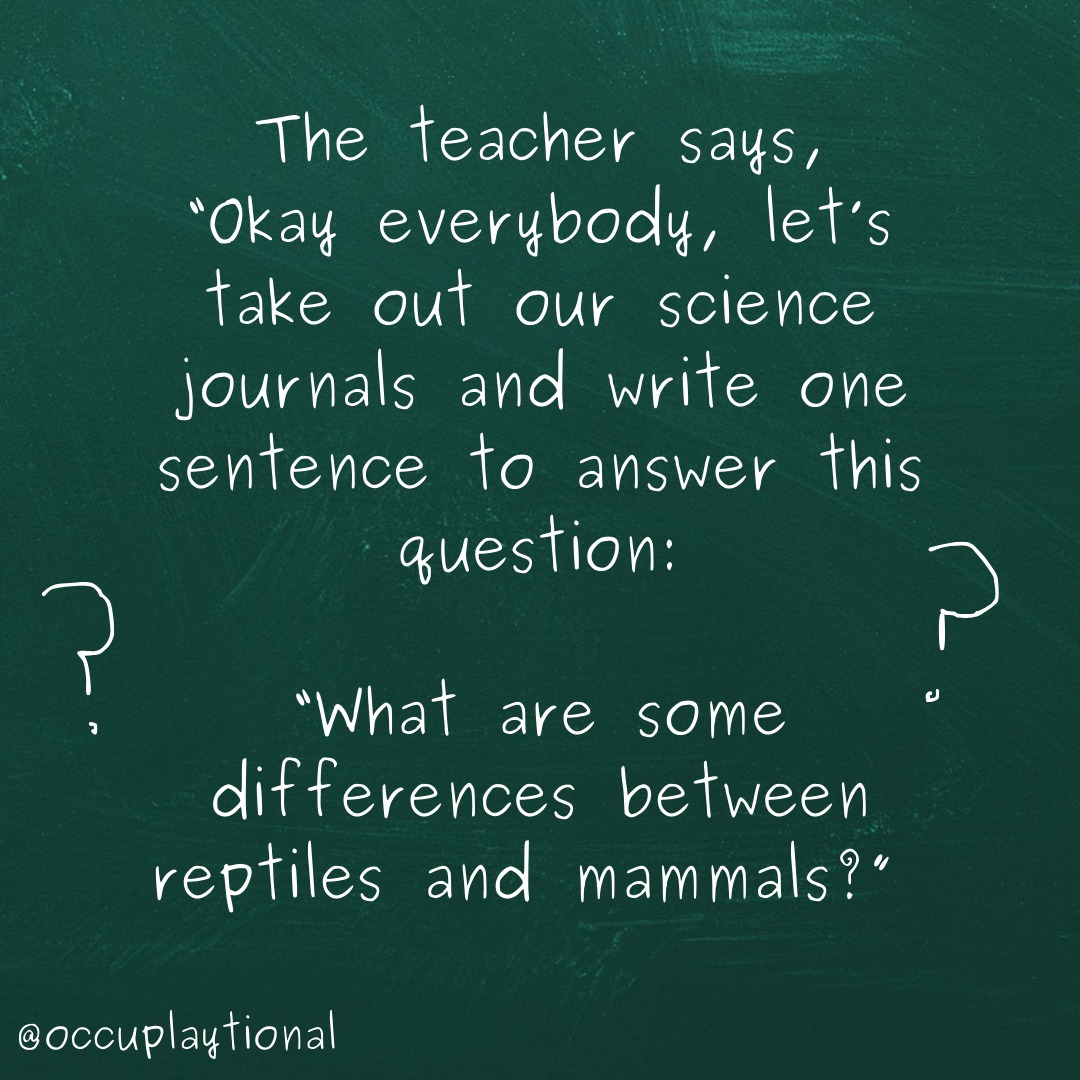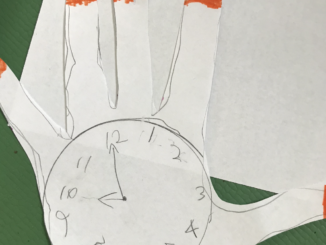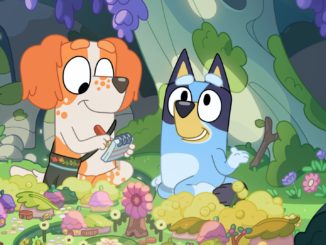The class finishes watching an age-appropriate video about reptiles and mammals.
The teacher says, “Okay everybody, let’s take out our science journals and write one sentence to answer this question: What are some differences between reptiles and mammals?”

What the curriculum hopes to assess is: Does the student understand the difference between reptiles and mammals?
What the assignment actually assesses is…
Does the student know…
…what a sentence is?
…to write their name at the top of the paper?
…how to capitalize and punctuate?
…the rules of the class (i.e., where to turn in finished work)?
Can the student…
…form all the letters correctly?
…remember new information from several minutes ago, presented auditorily, only once?
…follow multi-step directions?
…work well alone?
…transcribe on paper what they have in their head?
Does the student have…
…the stamina to write a sentence without fatiguing?
…the language skills to compare and contrast?
…a passion for reptiles, or a caring relationship with their teacher, such that they can apply themselves to this assignment they don’t care about?
Is the student’s brain…
…sufficiently nourished? Sufficiently well-rested?
…able to process academic info while keeping their body still?
…able to process academic info while keeping their mouth quiet?
…and does the student understand the difference between reptiles and mammals?
The student may not be able to meet all sixteen expectations. (And my list definitely isn’t exhaustive.)
With limited resources to spend, they might mistakenly prioritize a different one than the teacher does.
They might, for example, prioritize “sit still and be quiet”. But then they get nothing done, and their teacher is concerned that they’re missing work. They thought that what was expected of them was primarily to not be a bother. They might get referred to me for not self-advocating when they don’t understand an assignment.
They might, instead, prioritize “form all the letters correctly” and “write a complete sentence”. They might look around the room and painstakingly copy some sentence that they see. They might even copy the sentence, “What are some differences between reptiles and mammals?” They didn’t understand the assignment and they thought what was most important was to make good letters, good words, a good sentence.
The teacher might not realize the student is struggling with something unrelated. They might mistakenly believe the student didn’t pay attention, didn’t try, or didn’t understand. They might assume they know what’s going on for the student, or attribute it to “behavioral problems”, rather than getting curious in discussion with the student, asking for the information a different way, or bringing their questions to in-school resources (like speech and occupational therapists, learning specialists, etc.)
A first step to a solution is identifying what it is an assignment is actually supposed to teach. I’ve seen amazing success in classrooms when there are multiple ways to experience the learning and multiple ways to show what it is you’ve learned. Draw a picture, tell a fact out loud, record yourself saying something, turn to your partner and share it…
There are many ways to learn. There are many ways to show learning!



